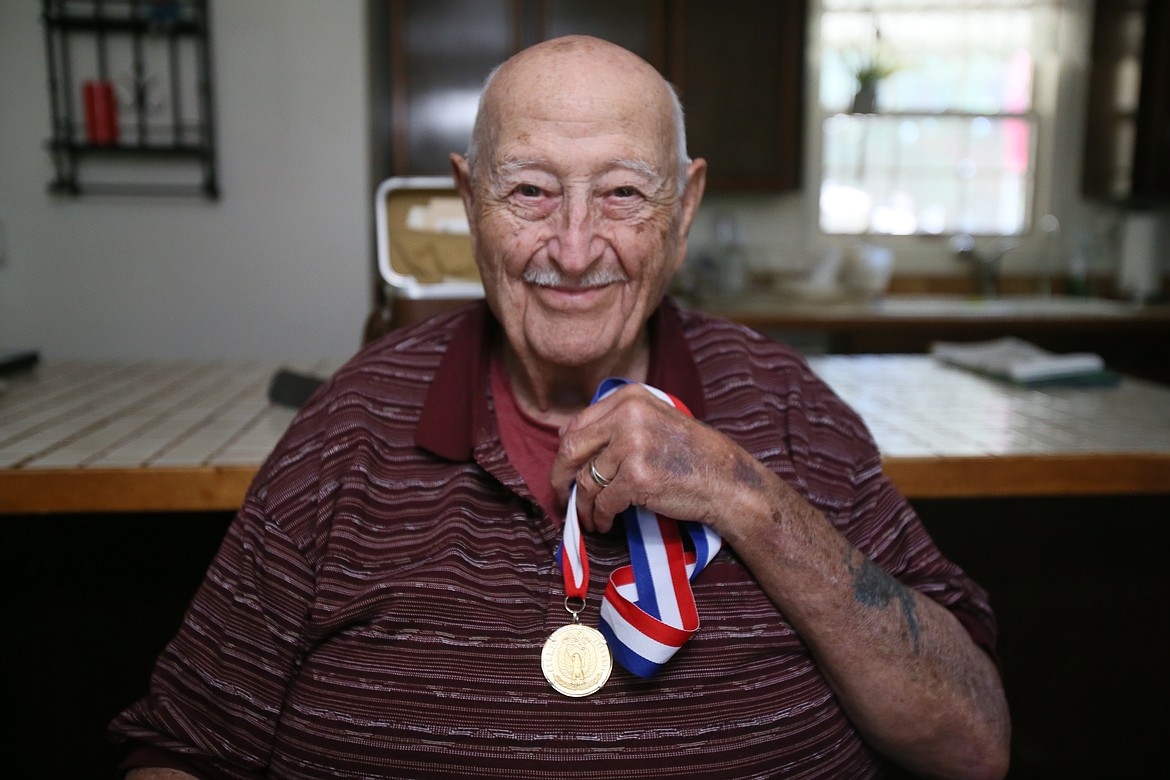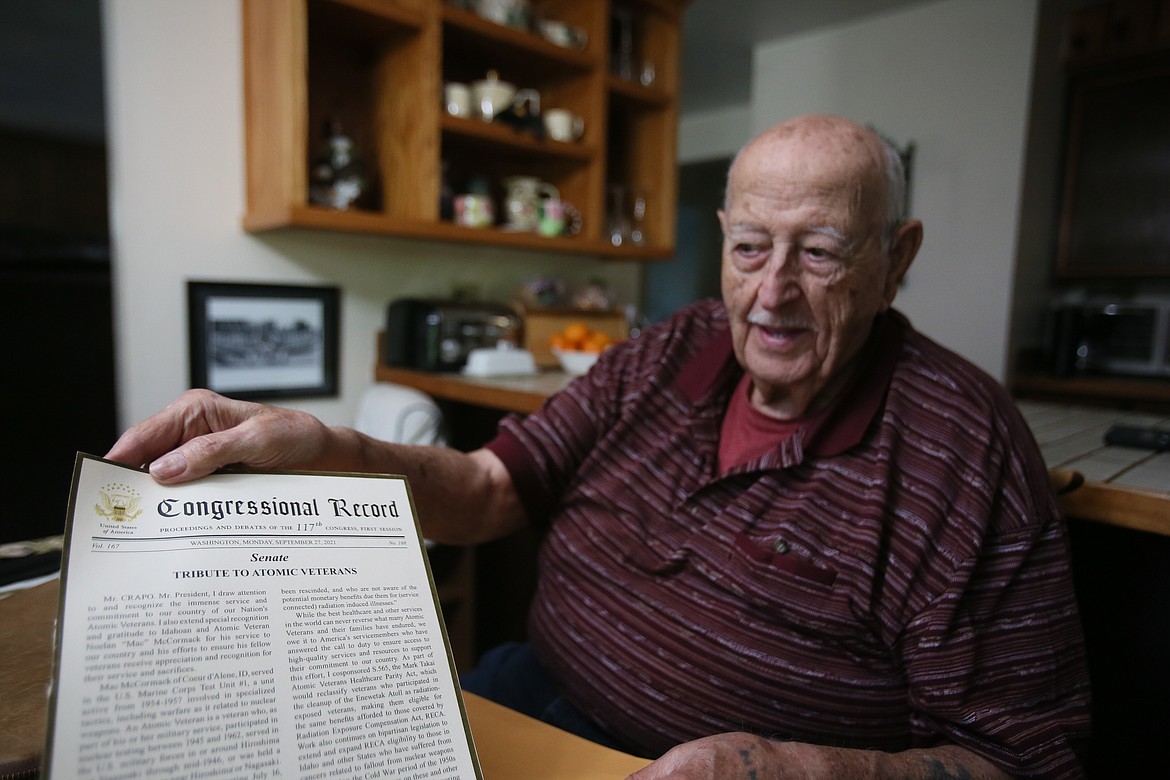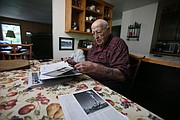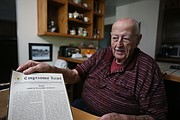Honoring our atomic veterans
"That's why I got cancer," Noelan “Mac” McCormack said as he set an old copy of Leatherneck magazine on his kitchen table.
A mushroom cloud rose into the air in the black-and-white photograph on the page, an image from Operation Tumbler–Snapper on the Nevada Proving Grounds. This is where a teenage McCormack and his fellow Marines in March 1955 were instructed to get as close as possible to where atomic bombs landed as the military conducted experiments with this new and terrible force.
"We were in slit trenches 3,000 yards away," he said. "After the blast and, as the cloud was rising, we got out of the slit trenches and wound up marching to 50 yards [from] ground zero. What it was, was actually being tested to see if we were still combat-available and still able to approach enemies at that close of range."
McCormack, 86, of Coeur d'Alene, served in the Marines from 1953 to 1961. He was part of the Marine Corps Test Unit No. 1, which tested new weapons and firearms for combat in the mid-1950s.
"(President) Dwight D. Eisenhower signed the order for us to appear in Area 51 in Nevada," McCormack said.
"There was (Operation) Teapot," his wife, Shirley, said. "There were so many."
Mac McCormack and his colleagues were among some of the first to witness the unbridled power of nuclear bombs, earning them the moniker "atomic veterans."
They were sworn to secrecy about the testing, which was classified until 1996.
"You just do it," McCormack recounted. "You’re there, you participate, you do the exercise, be a good boy and shut your mouth."
He said a number of civilians at the time snarled at the thought of the U.S. military's involvement in nuclear testing, not believing what he and his unit were commanded to do in the Nevada desert all those years ago.
“People ran around the United States saying, ‘Oh, they didn’t do that, nah, they’re just daydreaming,'” he said. "It was tough. It was tough."
President Joe Biden proclaimed July 16 to be National Atomic Veterans Day, following President Ronald Reagan's designation of the same day in 1983.
July 16 was selected for this recognition because it was on this day in 1945 when the United States detonated the world’s first nuclear device in Alamogordo, N.M.
"Better known by its code name, 'Trinity,' the successful test of the first atomic bomb brought forth a new age of science that changed the lives of many of those who served in our Armed Forces, and forever altered the nature and the risks of war," reads Biden's 2021 proclamation.
About a month ago, McCormack received his atomic veteran medal from the president, celebrating his service and willingness to put himself at risk for his country.
"He made a good move, finally," McCormack said.
The radiation exposure McCormack experienced at the test sites caused him to have chronic myeloid leukemia, which he was diagnosed with in the mid-1990s.
“It’s a long time to be carrying this and not know,” he said.
Despite his diagnosis, he's a busy guy. He is active with the Pappy Boyington Marine Corps League Detachment No. 966, he is a member of the Post Falls American Legion, he is active with the Elks Lodge and he is a member of the Church of Jesus Christ of Latter-day Saints.
McCormack said a lot of people don't realize or appreciate what the military has done for the country.
"These people put their lives on the line," he said.
It was significant for McCormack to receive the Atomic Veterans Commemorative Service Medal and the Atomic Veteran’s Service Certificate, "not just for me but for all the atomic veterans."
"I thought it was about time," he said.





